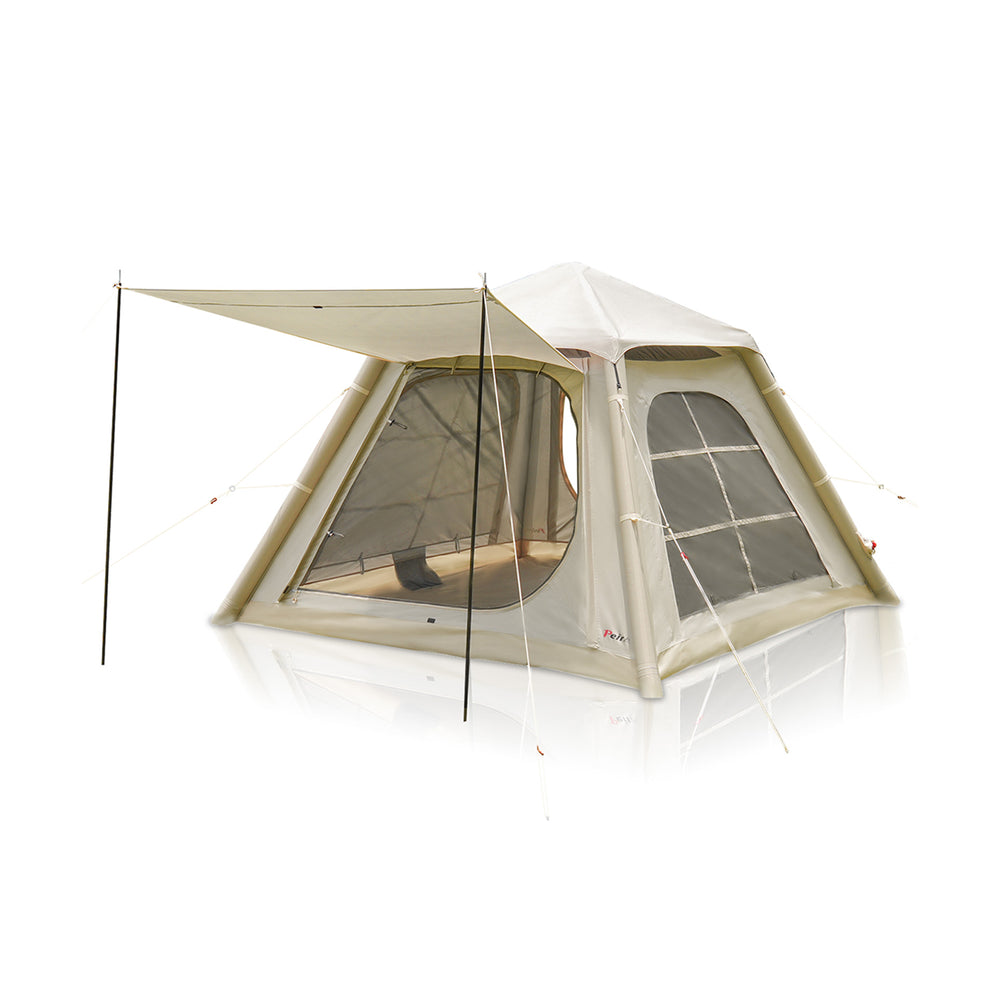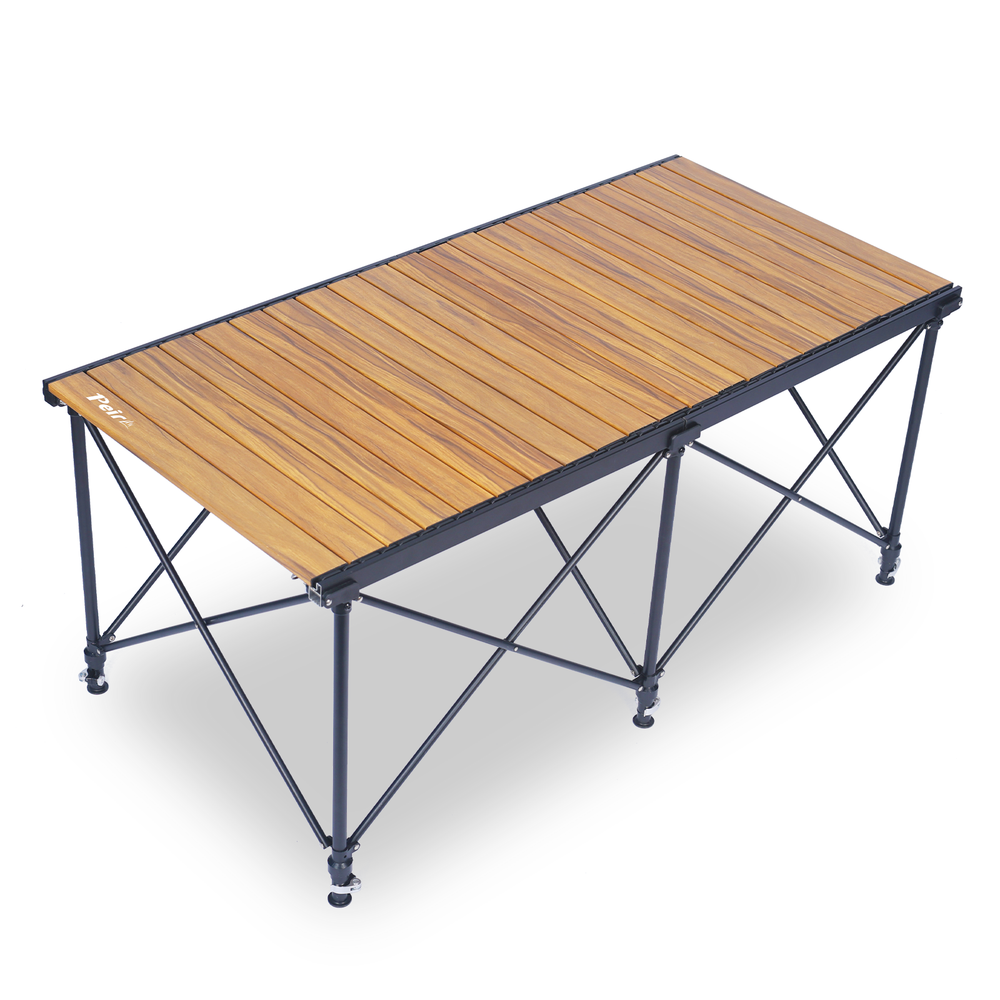Correctly packing a backpacking pack is one of those skills you don’t know is a skill until you’re walking down the trail with something jamming painfully into the small of your pack. Then you need to treat some water and realize your filter is at the bottom of the bag. Suddenly it starts to rain and where did you put that dang pack cover?
When you’re out for an overnight hike in the wilderness, you need to be amply prepared for the experience. At a minimum, that means having a map for self-navigation, plus packing water, food, a good tent, and your best hiking boots — you get the picture. You’ll also want to make sure you pack things properly so you don’t create an overly cumbersome pack, which can lead to a miserable slog along the way, or worse, injury and strain that can bring your planned outdoor adventures to a sudden end.
1. Choose a backpack with an internal frame. A backpack with an internal frame has more space than a backpack with an external frame. This extra space makes it easier to pack the tent inside the backpack.

2. Place the tent on the ground, long and flat. Put the tent poles in your bag. It is best to line the tent poles along one side of the tent instead of in the center. When you pack, these poles help provide support for the tent.

3. Roll the tent. Make sure the tent pole pocket is aligned with its side. This will ensure that the tent is rolled up as much as possible, and the pole bag will provide support and base for the tent.

4. Open the bag of the tent and stuff the tent in. The middle rod and staple pocket make this easier by providing central support.
You should only wrap the tent when it is dry. Packing a wet tent is very difficult. The tent is heavier, which can make walking more difficult than using a dry tent.
5. Put heavier items on the bottom of the carry on backpack and lighter items on the top. Hiking involves a lot of walking, and it is best not to weigh more than 30% of your body weight. Lighter items should be placed on the top of the backpack, and heavier items should be placed lower.
6. Put your tent in the middle of the backpack. Your sleeping bag should always be at the bottom of the backpack, as it can be very heavy and will always be the last item to be taken out of the bag. The tent should be placed directly above the sleeping bag or as close as possible to the middle.

7. Use a backpack with an external frame to get the best results. Although you can definitely use an inner frame backpack, the outer frame is specifically used to secure tents and other items to the outside.

8. Understand the risks of wrapping the tent outside. Although packaging the tent outside the large travel backpack has many advantages, there are also some obvious disadvantages. The biggest disadvantage is the risk of hooking the tent. The tent is outside and is more susceptible to damage from branches and other sharp objects. If the tent encounters obstacles on the branches, the branches may cut off the tent and may destroy the tent.

Assembling Gear for Your Trip
The season and location of your trip are the two most important elements in determining what gear to bring. If you’re headed out in the peak of summer to a location where you know the temperature won’t dip below 50 degrees Fahrenheit or so, you can get away with an ultralight sleeping bag or quilt and less warm clothing. But if your trip is in a shoulder season or you’re going up to elevations where the weather is less predictable, you need gear that will withstand the elements and keep you warm and dry.
Generally, the length of your trip only affects how much food you need to carry; the gear list stays the same (no, you don’t need a new outfit for each day). If you’re heading out for a week or more, you may have to choose a larger pack to accommodate the amount of food you need. Most sources recommend packing 2-2.5 pounds of food per person per day for an average backpacking trip. Make sure you choose calorie-dense options to fuel your body.
Miscellaneous tips for mastering how to pack a tent in a backpack
If you’re looking to take your “how to pack a tent in a backpack” expertise to the next level, consider splitting up your tent components between hikers. If you’re hiking with a partner (and plan to sleep in the same tent), divvy up the parts so one person is carrying the tent and rainfly while the other carries the poles and stakes. This helps distribute both your loads.
For minimalist ultralight hikers, fast packers, and anyone looking to “go light,” consider skipping a stuff sack altogether for your tent. If you’re a featherweight packer, there’s a good chance you’re hiking with a small, streamlined pack anyway, and a loose tent will likely fit perfectly wedged between your other hiking and backpacking essentials. If you opt for this route, we recommend tying your tent poles to the outside of your backpack.
Backpacking with a group can make packing easier because you can share the load. Assuming you are sharing a stove, tent and/or water treatment, these items can be split between hikers to lighten everyone’s packs. However, make sure you stay together or that everyone has a backup water treatment option like tablets in case someone gets lost and needs to treat their own water.
Choosing the Right Backpack
When you plan to pack your tent in a backpack and embark on a camping or hiking adventure, choosing the right backpack is crucial. In this section, we will discuss the two primary types of backpack frames – External Frame and Internal Frame – and help you make an informed decision on which one is better suited for your needs.
External Frame
External frame backpacks are designed with the frame on the outside of the pack, providing a supportive structure. These backpacks are perfect for carrying heavy loads, as the weight is distributed evenly across your hips and shoulders. Some advantages of an external frame backpack include:
- Ventilation: Due to the space between your back and the pack, airflow is improved.
- Easy access: Multiple compartments make it easier to organize and access your gear.
- Heavy loads: They accel at carrying heavier and bulky loads.
However, external frame backpacks also have some disadvantages:
- Bulkier: These packs tend to be larger and might not fit well in confined spaces.
- Less stable on uneven terrain: The higher center of gravity can make them less stable on rocky or uneven terrain.
Internal Frame
An internal frame backpack has a built-in frame within the fabric of the pack. These backpacks are popular among hikers and campers due to their compact and sleek design. Some advantages of an internal frame backpack include:
- Stability: The close fit to your body gives better balance when navigating uneven terrain.
- More streamlined: Their sleek design makes them less likely to snag on branches or rocks.
However, internal frame backpacks also have some disadvantages:
- Less ventilation: The pack sits closer to your back, which can make it warmer and less ventilated.
- Limited organization: With fewer compartments, it can be more challenging to organize and access your gear.
To determine the best backpack for your needs, consider the following factors:
- Intended use: Think about the terrain you’ll be traversing and the weight of your gear.
- Comfort: Try on several backpacks to find the right fit for your body and comfort level.
If you’re planning on attaching your tent to your backpack externally, make sure that the backpack you choose has a great external frame, plenty of space, and dedicated straps. If planning on packing your tent inside the backpack you will probably want a backpack with a good internal frame because they tend to have more space inside.
Ways to Pack a Tent on the Outside
Bottom: One of the best ways to carry a tent is by strapping it to the bottom of your backpack this way, heavy items are closer to your back and easier to carry. Some packs come with special straps for tents located at the bottom.
- Top: Lighter tents work best for this method; if your tent is too heavy, it will throw off your balance and make you feel unstable. I also believe this method works a lot better if your backpack has a floating brain or straps at the top to cinch it down.
- Middle: One of the worst ways to carry your tent. Much like how packing your tent inside towards the front of your backpack can cause imbalance, doing so on the outside can be just as bad, if not worse. Not only will the tent feel heavier, but it’s awkward and has a higher chance of getting snagged on something.
- Packing Both in and Out: Just like mentioned above. Do not forget you can always partially pack a tent on the inside and outside also. This also works well if you are splitting up tent gear between two people and they have different type of backpacks.
- Assembled vs Unassembled: Just like I mentioned above. Try packing your tent unassembled on the outside. Most tents will fit in storage pockets unassembled; you just have to play around with your own backpack setup.
How to Maintain Camping Tents at Good Shape
After cleansing the jar, it ought to be perfectly air-dried. This may take as much time as you can. In the event the available space isn’t sufficient, the tent could be retrieved until it dries.
Before keeping the tent, make certain that it’s totally dry. Any moisture from the tent will do all of the damage; from developing mold to producing a horrible odor and damaging that the waterproof coating.
Keep the tent in a cool and dry location. The tent cloth needs to have the ability to breathe hence a net bag or an old pillowcase may be the perfect storage.The life expectancy of a tent is usually depending on how well it’s cared for and the states of the camping websites.












 Peirhw Inflatable House Tent - Starry Night Love
Peirhw Inflatable House Tent - Starry Night Love
 Peirhw Glamping Tents - Friendship Castle
Peirhw Glamping Tents - Friendship Castle
 Peirhw Inflatable Canopy Tent - Adventurer
Peirhw Inflatable Canopy Tent - Adventurer



 Peirhw Portable Air Conditioner
Peirhw Portable Air Conditioner
 【Advance Sale】Peirhw Portable Power Station 2400W
【Advance Sale】Peirhw Portable Power Station 2400W
 【Advance Sale】Peirhw Portable Power Station 600W
【Advance Sale】Peirhw Portable Power Station 600W





 Peirhw Self Inflating Sleeping Pad
Peirhw Self Inflating Sleeping Pad
 Peirhw Air Mattress (8" Queen Type)
Peirhw Air Mattress (8" Queen Type)
 Peirhw Camping Sleeping Bag
Peirhw Camping Sleeping Bag


 Peirhw Butterfly-shaped Canopy for Camping
Peirhw Butterfly-shaped Canopy for Camping
 Peirhw Camping Waterproof Canopy (Cannot be Purchased Separately)
Peirhw Camping Waterproof Canopy (Cannot be Purchased Separately)


 Peirhw Outdoor Folding Chairs
Peirhw Outdoor Folding Chairs
 Peirhw Folding Camping Table
Peirhw Folding Camping Table












